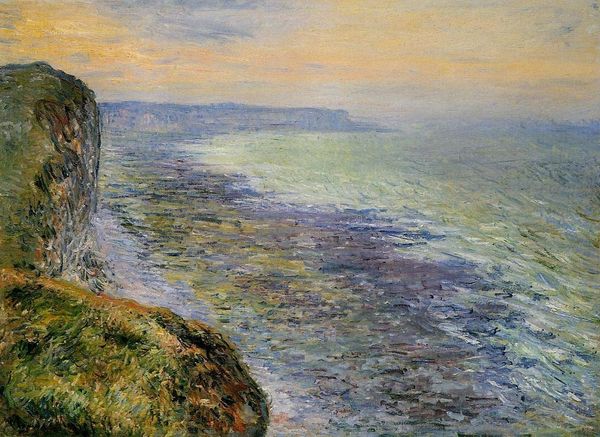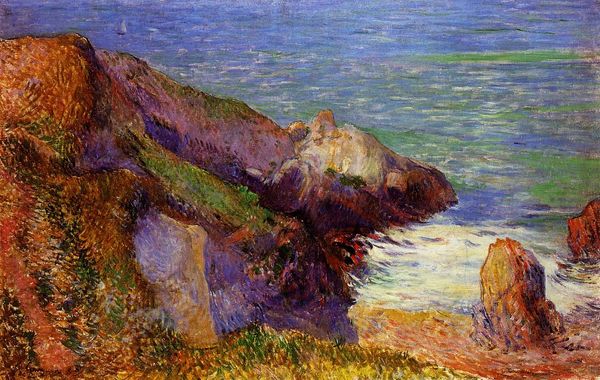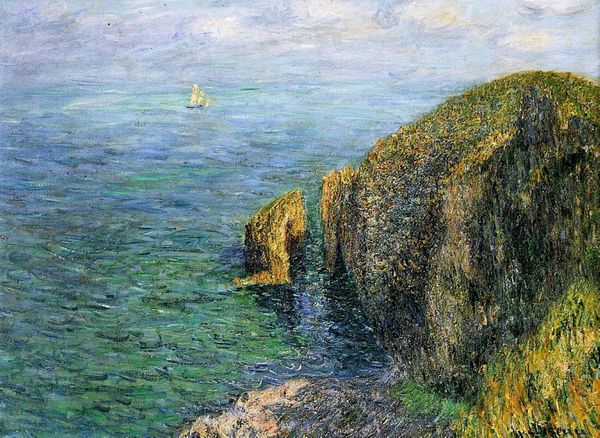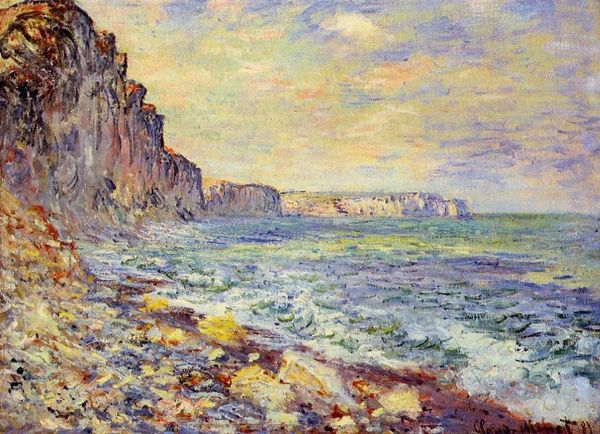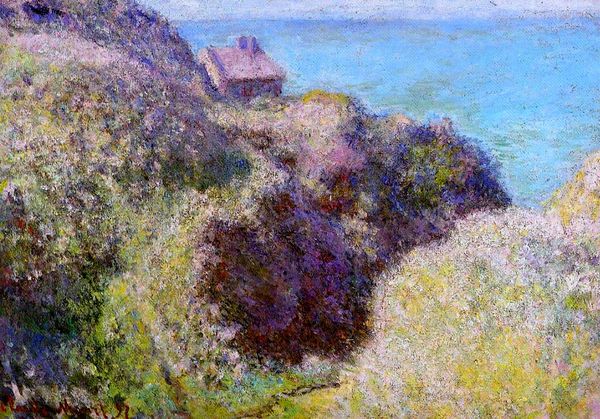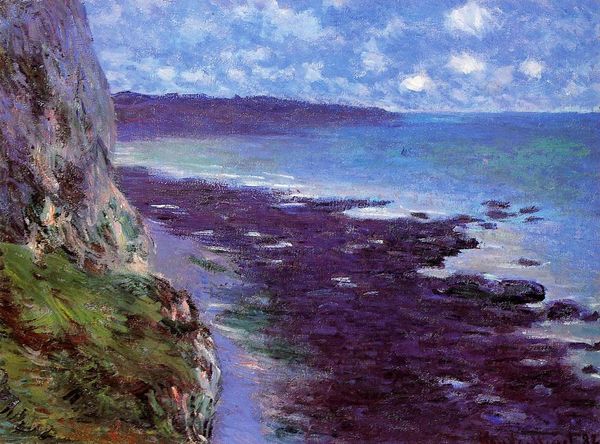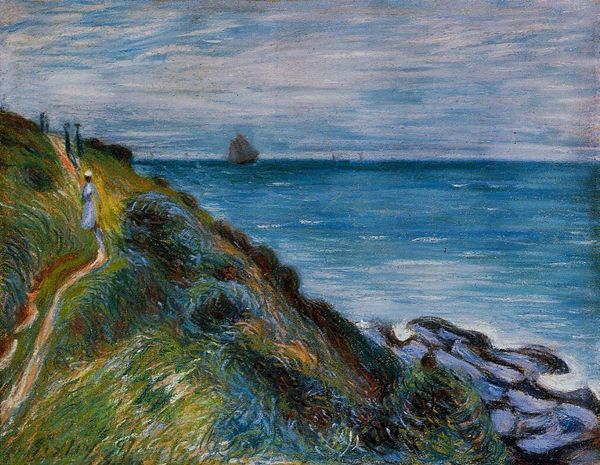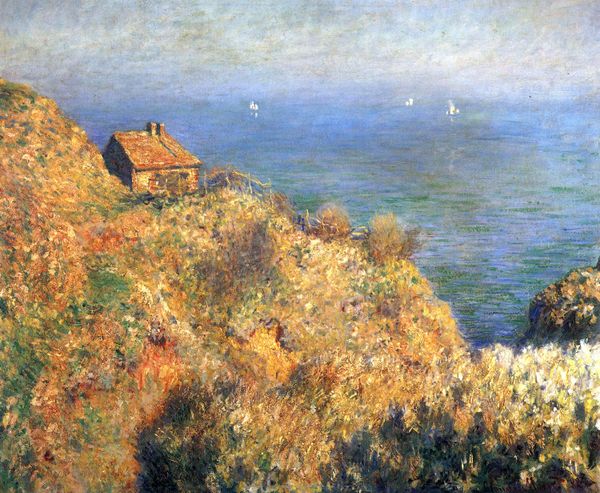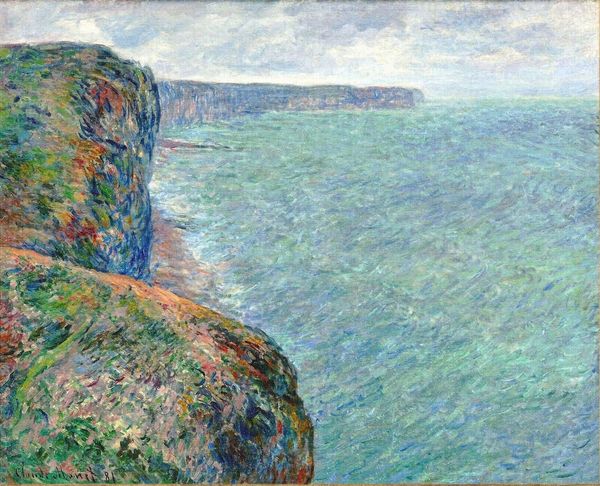
Copyright: Public domain
Claude Monet likely painted this seascape en plein air, a French term meaning ‘in the open air,’ using oil paints on canvas. The painting's surface is alive with brushstrokes, each dab and stroke a testament to Monet's direct engagement with his subject. Look closely, and you'll see how the materiality of the paint itself contributes to the overall effect. The texture ranges from thin washes to impasto highlights, evoking the surface of the water and the craggy cliffs. Monet embraced newly available pre-mixed paints that came in tubes. This allowed for the spontaneous creation of paintings like this one outdoors. The portability afforded by these tubes marks an important shift in artistic production that coincided with modern industrialization and the ability for artists to leave their studios and make work anywhere. By considering the materials and processes used in its creation, we can appreciate how Monet's painting reflects a moment of profound change in the art world, challenging traditional notions of skill and craftsmanship.
Comments
No comments
Be the first to comment and join the conversation on the ultimate creative platform.
